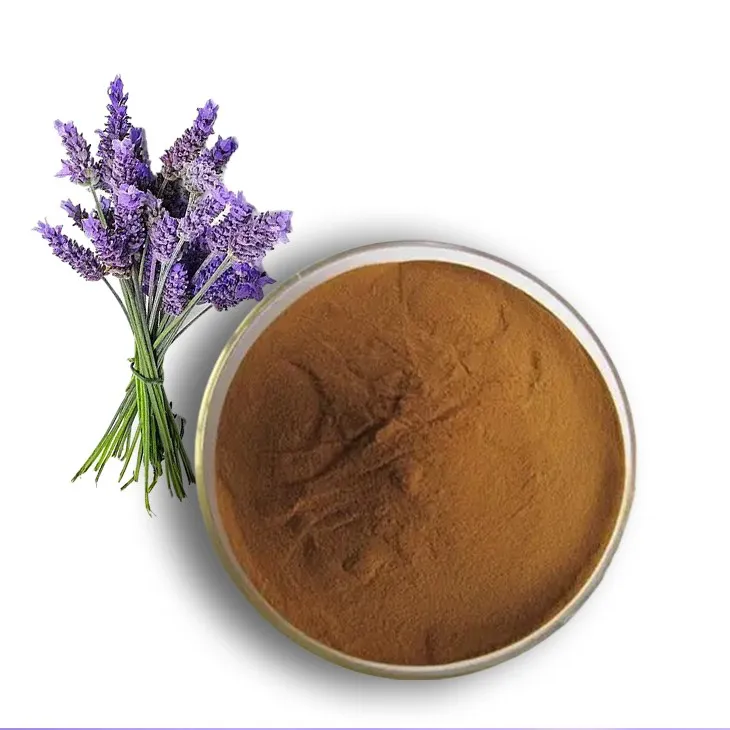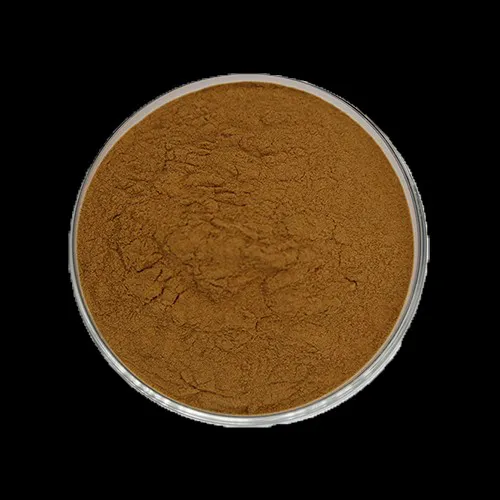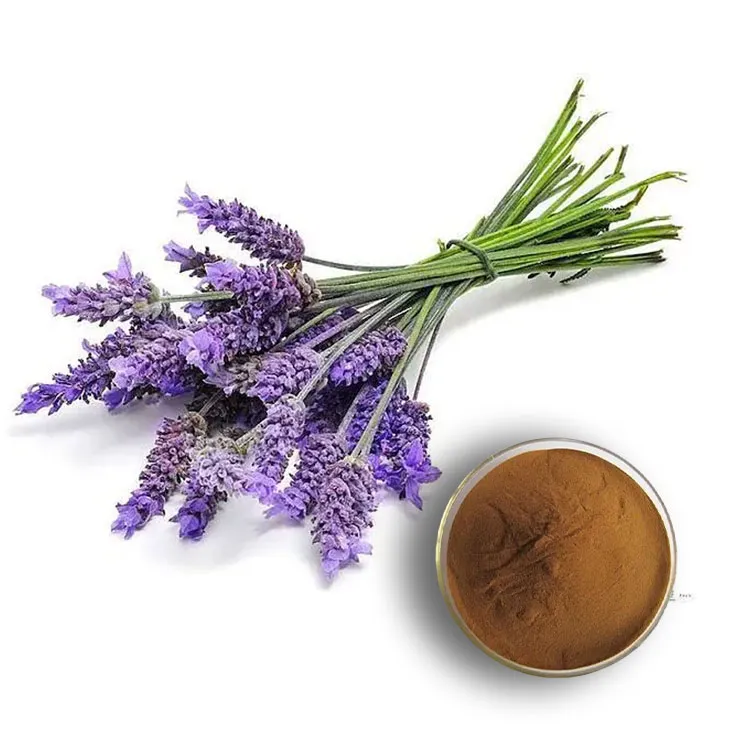- 0086-571-85302990
- sales@greenskybio.com
Lavender extract: components of fertilizers and feeds.
2024-11-29

1. Introduction
Lavender, a well - known and fragrant plant, has been used for various purposes throughout history. In recent years, its extract has emerged as a potentially valuable component in both fertilizers and feeds. The unique chemical composition of Lavender Extract endows it with properties that can be beneficial in agricultural and livestock applications. This article aims to comprehensively analyze the role of Lavender Extract as an ingredient in fertilizers and feeds from multiple aspects.

2. Lavender Extract in Fertilizers
2.1 Chemical Constituents Relevant to Soil Conditioning
Lavender extract contains several chemical components that can have a positive impact on soil conditioning. For example, it has organic acids which can help in adjusting the soil pH. When the soil pH is optimized, it becomes more conducive to nutrient availability for plants. The organic acids in lavender extract can also interact with soil particles, improving soil structure. This allows for better water infiltration and air circulation within the soil, which are crucial for healthy root growth. In addition, some compounds in the extract can act as chelating agents, binding to essential nutrients such as iron, zinc, and manganese. This chelation process prevents the nutrients from being locked in the soil and makes them more accessible to plants.
2.2 Contribution to Plant Nutrition
- Macronutrients: Although lavender extract may not be a major source of macronutrients like nitrogen, phosphorus, and potassium, it can still play a role in their uptake. For instance, by enhancing root development through soil conditioning, plants are better able to access these essential macronutrients from the soil.
- Micronutrients: As mentioned before, the chelating ability of lavender extract can increase the availability of micronutrients. These micronutrients are often required in small amounts but are vital for various plant physiological processes. For example, zinc is involved in enzyme activation, and manganese is important for photosynthesis.
- Secondary Nutrients: Some secondary nutrients such as calcium and magnesium can also benefit from the presence of lavender extract. It can help in maintaining the balance of these nutrients in the soil - plant system.
2.3 Environmental Benefits in Fertilization
Using lavender extract in fertilizers can also bring environmental advantages. Firstly, as it is a natural product, it is generally more biodegradable compared to some synthetic fertilizers. This means that it is less likely to accumulate in the soil and cause long - term environmental problems. Secondly, the improved soil structure due to lavender extract can reduce soil erosion. When the soil has better aggregation and stability, it is less prone to being washed away by water or blown away by wind. Moreover, the enhanced nutrient uptake efficiency by plants can lead to less nutrient runoff. This helps in protecting water bodies from eutrophication, which is often caused by excessive nutrient input from fertilizers.

3. Lavender Extract in Feeds
3.1 Impact on Animal Well - being
- Immune System Enhancement: Lavender extract contains bioactive compounds that can have a positive impact on the immune system of animals. These compounds can stimulate the production of immune cells and enhance the body's defense mechanisms against diseases. For example, in poultry, it has been observed that the addition of lavender extract to feed can reduce the incidence of certain infections.
- Stress Reduction: Animals can experience stress in various farming conditions, such as overcrowding or changes in diet. Lavender extract has been shown to have a calming effect on animals. This can lead to reduced stress levels, which in turn can improve their overall well - being. For example, in swine, lavender - supplemented feed has been associated with less aggressive behavior, which may be an indication of reduced stress.
3.2 Nutritional Aspects
While lavender extract is not a substitute for traditional feed nutrients, it can add value in terms of certain nutritional aspects. It contains antioxidants, which can help in protecting animal cells from oxidative damage. Oxidative damage can occur due to various factors such as exposure to environmental pollutants or normal metabolic processes. By scavenging free radicals, the antioxidants in lavender extract can contribute to the maintenance of healthy cells in animals. Additionally, some components of the extract may have prebiotic - like properties, promoting the growth of beneficial gut microbiota. A healthy gut microbiota is essential for proper digestion and absorption of nutrients in animals.
3.3 Palatability and Feed Intake
The pleasant aroma of lavender extract can have an impact on the palatability of feed. For some animals, the addition of lavender extract can make the feed more appealing, which can lead to increased feed intake. This is particularly important in livestock production, as sufficient feed intake is necessary for growth and productivity. However, it should be noted that the effect on palatability may vary among different animal species. For example, some ruminants may be more receptive to the addition of lavender extract in feed compared to monogastric animals.

4. Challenges and Considerations
4.1 Standardization of Extract Quality
One of the major challenges in using lavender extract in fertilizers and feeds is the standardization of its quality. The chemical composition of lavender extract can vary depending on factors such as the variety of lavender used, the extraction method, and the growth conditions of the plant. This variability can make it difficult to ensure consistent effects in agricultural and livestock applications. To address this issue, there is a need for strict quality control measures and standardization protocols. These should include proper identification of the lavender variety, standardized extraction procedures, and quality testing of the final extract.
4.2 Dosage and Application Methods
Determining the appropriate dosage of lavender extract in fertilizers and feeds is another important consideration. Too little of the extract may not produce the desired effects, while too much can potentially have negative impacts. For example, in feed, excessive amounts of lavender extract may cause digestive problems in animals. In fertilizers, over - application may disrupt the soil - nutrient balance. Moreover, the application methods also need to be optimized. For fertilizers, it needs to be evenly distributed in the soil, and for feeds, it should be properly mixed with other feed ingredients to ensure uniform intake by animals.
4.3 Compatibility with Other Ingredients
In both fertilizers and feeds, lavender extract needs to be compatible with other ingredients. In fertilizers, it may interact with other chemical fertilizers or soil amendments. These interactions can either enhance or reduce the effectiveness of the overall fertilizer formulation. In feeds, it must be compatible with other feed components such as proteins, carbohydrates, and vitamins. For example, some compounds in lavender extract may react with certain amino acids in proteins, affecting the nutritional value of the feed. Therefore, thorough research on the compatibility of lavender extract with other ingredients is required.
5. Future Research Directions
- In - depth Studies on Bioactive Compounds: Further research is needed to identify and understand the specific bioactive compounds in lavender extract that are responsible for its beneficial effects in fertilizers and feeds. This knowledge can help in developing more targeted and effective products.
- Long - term Effects on Soil and Animals: Most of the current studies on lavender extract in fertilizers and feeds are short - term. Long - term studies are required to determine the cumulative effects on soil health, plant growth, and animal well - being. For example, in the case of soil, it is important to know if the continuous use of lavender extract - based fertilizers can maintain soil fertility over an extended period.
- Optimization of Extraction and Formulation: Research should focus on optimizing the extraction methods to obtain a more consistent and high - quality lavender extract. Additionally, the formulation of fertilizers and feeds containing lavender extract needs to be improved to enhance its stability and effectiveness.
6. Conclusion
Lavender extract shows great potential as a component in fertilizers and feeds. Its chemical constituents can contribute to soil conditioning, plant nutrition, animal well - being, and more. However, there are also challenges such as quality standardization, dosage determination, and compatibility issues that need to be addressed. With further research and development, it is possible to fully utilize the benefits of lavender extract in the agricultural and livestock industries, leading to more sustainable and efficient production systems.
FAQ:
1. What are the main chemical components in lavender extract relevant to fertilizers?
Lavender extract contains various chemical components relevant to fertilizers. For instance, it may have elements like potassium, which is important for plant growth and development. Additionally, certain organic compounds in the extract can improve soil structure, such as lignin - like substances that can enhance soil aggregation. Some secondary metabolites in lavender extract might also act as growth regulators for plants, influencing processes like root development and nutrient uptake.
2. How does lavender extract improve soil conditioning in fertilizers?
Lavender extract can improve soil conditioning in multiple ways. Its organic matter content can increase soil porosity, allowing better air and water circulation in the soil. This helps roots to access oxygen more easily and also improves water - holding capacity. The extract may also contain substances that can buffer soil pH, preventing drastic changes in acidity or alkalinity which could otherwise be harmful to plants. Moreover, it can stimulate the growth of beneficial soil microorganisms, which play a crucial role in nutrient cycling and soil fertility.
3. In what ways can lavender extract enhance plant nutrition in fertilizers?
Lavender extract can enhance plant nutrition in several ways. As mentioned before, it may contain essential nutrients like potassium. It can also contain organic acids that can chelate micronutrients in the soil, making them more available for plant uptake. For example, it can form complexes with iron or zinc, which are important for enzyme functions in plants. Additionally, the growth - promoting substances in the extract can stimulate root growth, which in turn enables plants to explore a larger volume of soil for nutrients.
4. How does lavender extract contribute to the well - being of animals in feed?
Lavender extract can contribute to the well - being of animals in feed in various ways. One way is by enhancing the immune system of animals. It may contain bioactive compounds such as flavonoids and phenolic acids that have antioxidant and anti - inflammatory properties. These properties can help animals to better resist diseases. Lavender extract can also improve the palatability of feed, which may lead to increased feed intake. Some studies suggest that it can have a positive impact on the digestive system of animals, for example, by promoting the growth of beneficial gut bacteria.
5. Are there any potential risks or limitations when using lavender extract in fertilizers and feeds?
When using lavender extract in fertilizers and feeds, there are some potential risks and limitations. In fertilizers, if not used properly, the extract may introduce excessive amounts of certain substances that could disrupt the soil nutrient balance. In feeds, although lavender extract has many potential benefits, high concentrations may cause adverse effects on animals. For example, it may lead to changes in the flavor of animal products if used in large amounts. Also, the quality and composition of lavender extract can vary depending on the source and extraction methods, which may pose challenges in standardizing its use.
Related literature
- The Role of Lavender Extract in Sustainable Agriculture: A Comprehensive Review"
- "Lavender Extract in Animal Feed: Effects on Health and Productivity"
- "Chemical Components of Lavender Extract and Their Applications in Fertilizer Science"
- ▶ Hesperidin
- ▶ citrus bioflavonoids
- ▶ plant extract
- ▶ lycopene
- ▶ Diosmin
- ▶ Grape seed extract
- ▶ Sea buckthorn Juice Powder
- ▶ Beetroot powder
- ▶ Hops Extract
- ▶ Artichoke Extract
- ▶ Reishi mushroom extract
- ▶ Astaxanthin
- ▶ Green Tea Extract
- ▶ Curcumin Extract
- ▶ Horse Chestnut Extract
- ▶ Other Problems
- ▶ Boswellia Serrata Extract
- ▶ Resveratrol Extract
- ▶ Marigold Extract
- ▶ Grape Leaf Extract
- ▶ blog3
- ▶ blog4
-
Certified organic propolis extract powder.
2024-11-29
-
How to make powder with lemon extract.
2024-11-29
-
Certified organic aged garlic extract.
2024-11-29
-
Active components in yam extract.
2024-11-29
-
Grape Leaf Extract
2024-11-29
-
Chaste Berry Extract
2024-11-29
-
Boswellia Serrata Extract
2024-11-29
-
Alisma Extract
2024-11-29
-
Dandelion Root Extract
2024-11-29
-
Hericium erinaceus extract powder
2024-11-29
-
Oyster Mushroom Extract Powder
2024-11-29
-
Artichoke Leaf Extract
2024-11-29
-
Angelica sinensis extract
2024-11-29
-
Lemon Balm Extract
2024-11-29





















